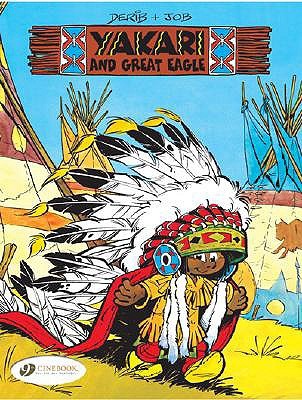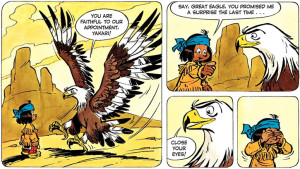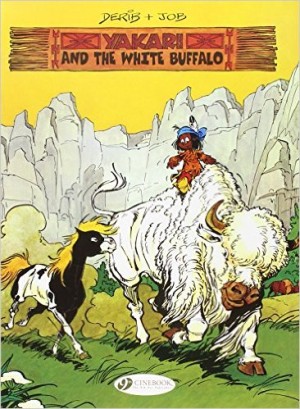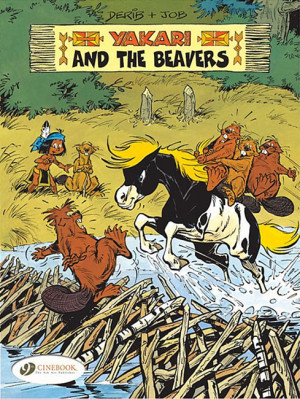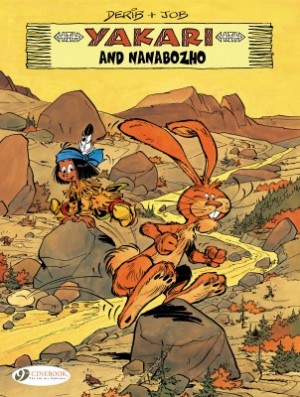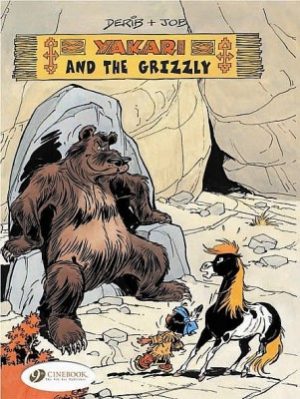Review by Jamie McNeil
Yakari’s creators, Derib (Claude de Ribaupierre) and Job (André Jobin) had a fascination with Native American culture that they channelled into a series about a Native American boy who can speak to animals and enjoys exciting adventures. While relatively unknown elsewhere, the series has proved hugely popular in Europe since its first appearance in 1973.
Yakari is a boy from the Sioux tribe who dreams nightly of visits with his friend Great Eagle, and in his latest dream Great Eagle tells Yakari their next meeting will be in the real world. He urges Yakari to be like him, the snag being that Yakari has no idea what it means to be like Great Eagle and all the adults who could help him are disinterested or too busy. In his quest to unravel Great Eagle’s cryptic message, Yakari shows courage, intelligence and kindness, which earns him a visit from Great Eagle and the gift of an eagle feather. When he shows it to his father, his father insists that Yakari give it to him as he’s not earned such a great honour. When a wildfire then separates Yakari from his tribe he must use his wits and training to survive, return to his family and make new friends along the way.
Yakari and Great Eagle is an enchanting children’s story, adventure packed and gloriously illustrated by artist Derib. Job’s dialogue is uncomplicated and easy to read, with a mystical lilt and sense of destiny that will enthral young boys especially. It’s old fashioned in the sense that stories like this are not as common as they were, and Yakari is nothing like the cowboys vs. Indians tropes of Westerns. No Europeans feature, and while there are stereotypes like someone obsessed with pipe smoking, it also honours culture, beliefs and the Native Americans themselves. Yakari has a charm to it that most children’s graphic novels lack, especially ones similarly adventure based.
Derib’s art is really beautiful, expressive and detailed where it counts, with a simple background of blue sky and forests. Animals are accessible and well anthropomorphised, adults carry the gravitas of age, and the horses! Many artists have commented on the difficulty of mastering horses. Derib not only renders a horse with almost human qualities, he renders herds of them! Galloping, leaping, playing, bucking! It is a joy to study the detail in his work and each horse is ever so slightly different from the next. The depiction of forests, rivers, canyons and the tribal camp is beautiful at night or at day. Some things are puzzling, like a use of blue over a scene to denote tension, and the quality of the print doesn’t always do Derib’s work justice. However, it still bears close scrutiny.
Yakari conveys freedom with the wildness of surroundings, and that yearning for freedom is likely what attracts boys of all ages to it. That the creators have poured love into Yakari, Little Thunder and others is evident when two boys, aged seven and eight years old respectively, insist that Yakari and Great Eagle be awarded five stars because they enjoyed it so much. The adventure, the animals, Yakari’s kindness and bravery are all attractive and, for a tale published in 1973, it is impressive that modern boys with access to sophisticated technology and animation techniques are so taken with Yakari.
Yakari and the White Buffalo is the little Sioux boy’s next outing.
